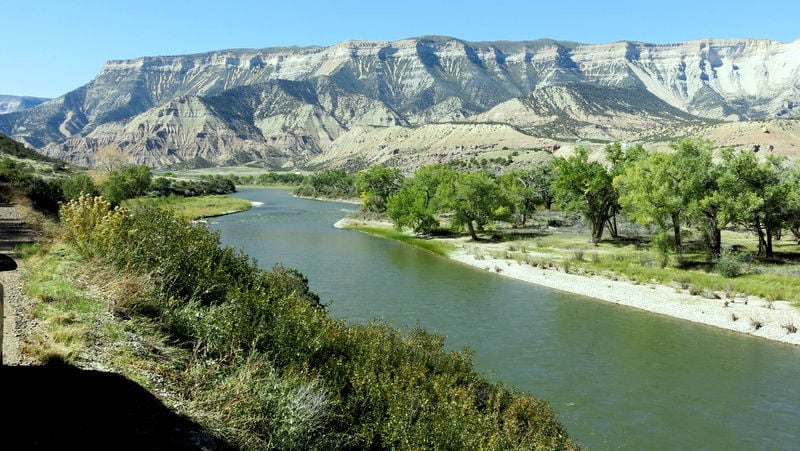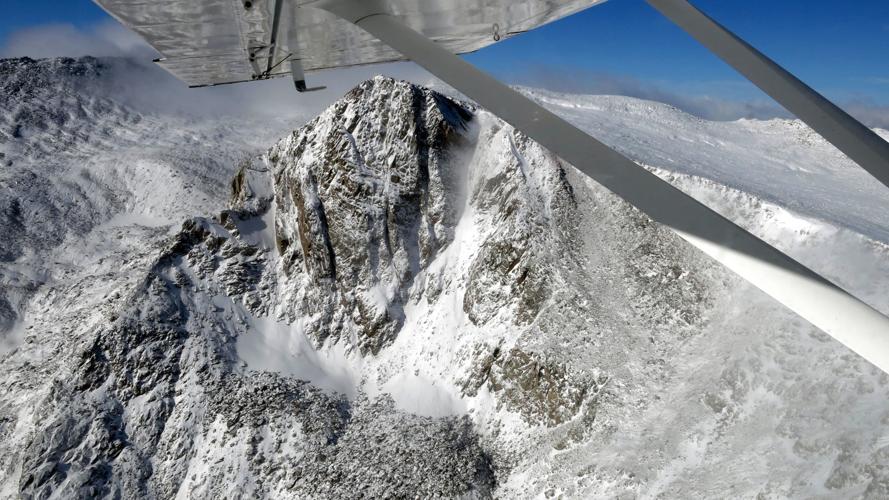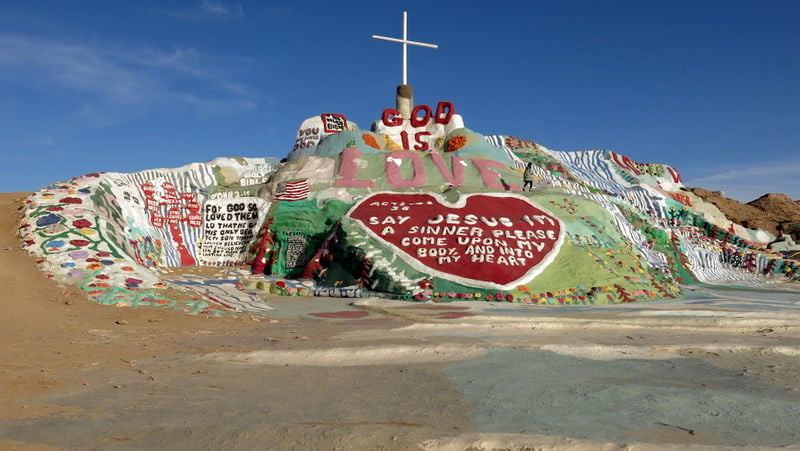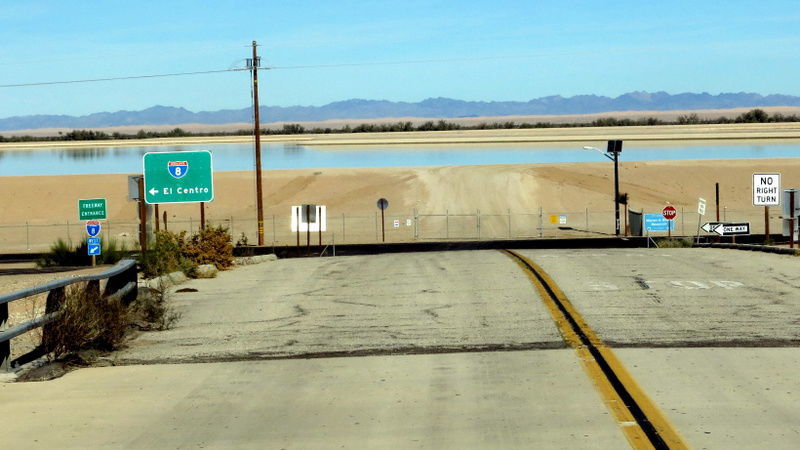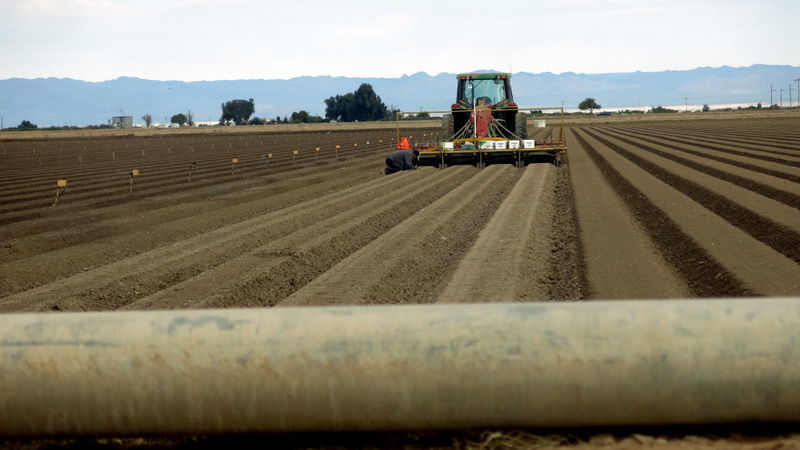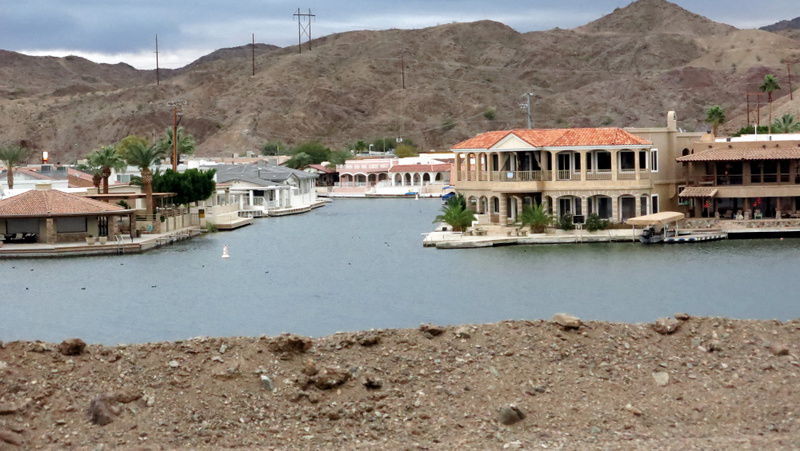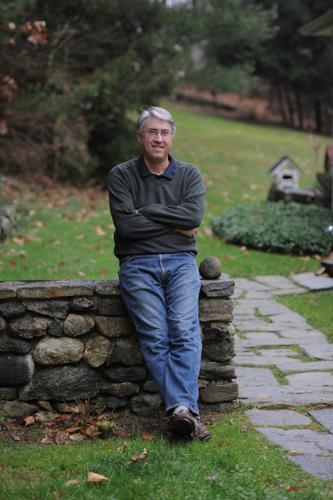Author David Owen found a useful way to think about water issues: trace the course of one river, from source to mouth.
In 2014 and 2015, Owen followed the Colorado River, from its headwaters just over the Continental Divide in northern Colorado, to where it winds down as a dry ditch in the Gulf of California at the tail end of the once-storied Colorado River Delta. Behind the wheel of rental cars, he drove the length of the 1,400-mile-long river over several months. His stated goal was to “see where the water is coming from, how it is being used and where the water is going.”
The result is “Where the Water Goes,” one part travelogue, one part narrative and one part analytical tract on the river that is the lifeblood of the Intermountain West.
Owen, a staff writer for the New Yorker magazine since 1991, lives in Connecticut. He went almost anywhere along the river worth going that’s reachable by car, driving more than 3,000 miles, exploring as much of the river as he could without getting wet, and listened to three of the five volumes of the audiobook of “Game of Thrones,” he wrote. “I also received what I now think of as a graduate level education in the river and its many dependents, human and otherwise.”
Visiting farms, government offices, campgrounds, power plants, ghost towns, fracking sites, aqueducts, reservoirs and pumping stations led him to one overriding theme as he explained the tradeoffs resulting from most of the river’s obvious fixes.
“Water problems in the Western United States, when viewed from afar, can seem tantalizingly easy to solve; all we need to do is turn off the fountains at the Bellagio (a hotel on the Las Vegas Strip whose fountains spew water 460 feet into the air), stop selling hay to China, ban golf, cut down the almond trees and kill all the lawyers,” he wrote. “As you draw closer, though, you realize that every new solution creates additional problems and that tinkering with even small elements in the river’s vast network of beneficiaries can upset dozens of others.
“Addressing everything effectively, equitably and permanently will force us to weigh the kinds of choices we prefer to avoid,” he wrote.
Here are some questions and answers from Owen about his book.

David Owen flew over the headwaters of the Colorado River, as part of his research on water use from the 1,400-mile-long river. He drove more than 3,000 miles, exploring the river.
Q. How did going down the river help you think more clearly about its problems?
A. I think the Colorado makes a good window on water problems in the U.S. We used it all up. It runs out. You can actually say you know how much water you are talking about.
Q. How did contacts with farmers, water officials, environmentalists and others shape your views?
A. I think the people at the Grand Valley vineyard I visited in northern Colorado think of their increased irrigation efficiency as solely a good thing — and as far as they themselves are concerned I’m sure it is. Larry Cox, the Imperial Valley (California) farmer I visited, has made significant increases in his irrigation efficiency, and I assume he thinks of that as a good thing, too.
But as Cox applies less water to his fields he also worries more about salt accumulation in the soil. That’s an issue that applies not just to Colorado River irrigators but also to (for example) golf course superintendents who irrigate with recycled water, which usually has an even higher salt content than river water does. When you apply salty water to your fields, you have to be able to flush the salt out, as the farmers in the Wellton-Mohawk learned.
And that means that people who irrigate with recycled water typically have to irrigate more heavily than they did before they began using recycled water, to keep pushing the salt below the root zone.
Q. How does this conundrum of increased irrigation efficiency causing other problems play out in the Imperial Valley, in the Southern California desert near El Centro west of Yuma?
A. Efficiency improvements (there) mean that only half as much irrigation runoff will reach the Salton Sea (lying northwest of the valley) as used to be the case, and since the sea has very little in the way of other inputs the water level is going to continue to fall, rapidly exposing much more of the sea’s toxic lakebed to the winds. That shrinkage is already having health effects in Southern California, and the problem is going to grow as the sea shrinks further.

Planting lettuce in the Imperial Valley, California with water from the Colorado River.
Q. But isn’t it good to stretch our water supplies as far as possible?
A. The real impact of efficiency gains of all kinds depends what you do with what you save. Mostly what we do with efficiency gains is reinvest them in other consumption. (When I “save” energy by getting better at turning off lights, my carbon footprint doesn’t shrink, because I spend my windfall on other forms of energy use — driving my car, ordering more from Amazon Prime, taking a plane trip to Europe.)
In fact, the history of civilization is really the history of steadily increasing efficiency. Efficiency gains are leverage; they’re what we’ve used to make ourselves rich. Water may seem different, but it really works mostly the same way-even though the critical environmental impacts aren’t necessarily ones obviously related to water use.
Q. In recent years water use in Tucson, Phoenix and in much of Arizona has declined or stayed about the same compared to decades ago, despite massive population growth. Isn’t that a sign that conservation does do some good and that it’s not always a case of conservation for growth?
A. Yes, of course it can be a good thing. But, for example: Tucson used to rely solely on groundwater; now it uses surface water that comes from somewhere else, and that water (therefore) can’t be used somewhere else. So you have to look beyond Tucson itself, or Arizona itself. Water is tricky because it doesn’t get used up in the same way fuels do, but the issues are still similar. There is (or was) an environmental economist named Herman Daly, who said, roughly, that frugality (by which he meant “non-wasteful sufficiency”) keeps an economy at a sustainable scale, while efficiency of allocation helps us live better at any scale but does not help us set the scale itself.
Q. What do you mean?
A. Becoming more efficient in its use of residential water has enabled the sprawling Boulder/Denver/Colorado Springs megalopolis to sprawl even farther. To a water manager, that looks like a triumph, but to someone who worries about the climate impact of sprawl it looks like a disaster. Water use is never only about water.
Q. How do the Colorado’s problems compare to water problems in the rest of the world?
A. The water problems in the Western U.S. are on a different scale than water problems in the devastated part of world. An entire city in South Africa (Cape Town) is on verge of running out. The conflict in Syria is partly caused if not precipitated by a tremendous drought. The crisis was caused by migration of young men into the cities, by a civil conflict over resources.
You go back and look through history and the most significant conflicts are resource conflicts. Countries go to water wars — they want to grab resources.
Q. Could Cape Town happen here?
A. I think there are things that could happen that could cause huge crises. The Bay Delta in northern California is the biggest overhanging potential water crisis in the U.S. If California loses the Bay Delta and it becomes inundated with ocean water, California will have something more like Cape Town problems. Southern California depends on a huge amount of water coming down through the state.
Q. How did your experiences shape your perceptions of the difficulties in identifying villains on the Colorado?
A. Owning a vineyard in Colorado’s Grand Valley seems kind of insane, since the vineyards have to buy grapes from elsewhere in order to make enough wine to survive as businesses. But the wine-tasting rooms that are their real sources of income bring visitors to the area, and those visitors stay in local hotels and eat in local restaurants and go on bike tours, and are therefore part of what makes it possible for the entire community to exist.
(Some) people are outraged that western farmers use Colorado River water to grow Sudan grass that they export as hay to China. But growing forage crops during months when the temperatures are too high for growing lettuce and onions makes Imperial Valley farming an economically viable year-round job.

The Brock Reservoir is located near Gordons Well, Calif., in the Imperial Valley.
Q. Your last chapter dissects numerous water solutions and finds weaknesses in virtually every one. That includes desalination, importing water into the region via canal, cloud-seeding, controlling or managing growth and fallowing, buying out or protecting farms. But we’re running a structural water deficit down here on the river’s Lower Basin. Something’s got to give, right?
A. I think so. I don’t think we ever solve problems by working from the bottom, like I’m going to use less water by taking shorter showers. The rational thing to do is make a reasonable assessment of how much water is available for us to exploit. Then allocate it among all the ways we want to exploit it, while acknowledging we not going to let Phoenix blow away or to screw the tribes.
Q. That’s never been done on the Colorado.
A. The big unaddressed issue . . . fits mostly under the label “overallocation.”
At some point, you have to confront supply, by thinking about how much water is really available for allocation among all possible uses. Arizona, like the other states, has generally been focused on protecting its access to the water that it’s legally entitled to rather than on working with all the other stakeholders, in the Colorado basin and beyond, to devise a rational plan for everyone and for a future about which very little can be known for certain. But something like that may be beyond the limits of human nature.


